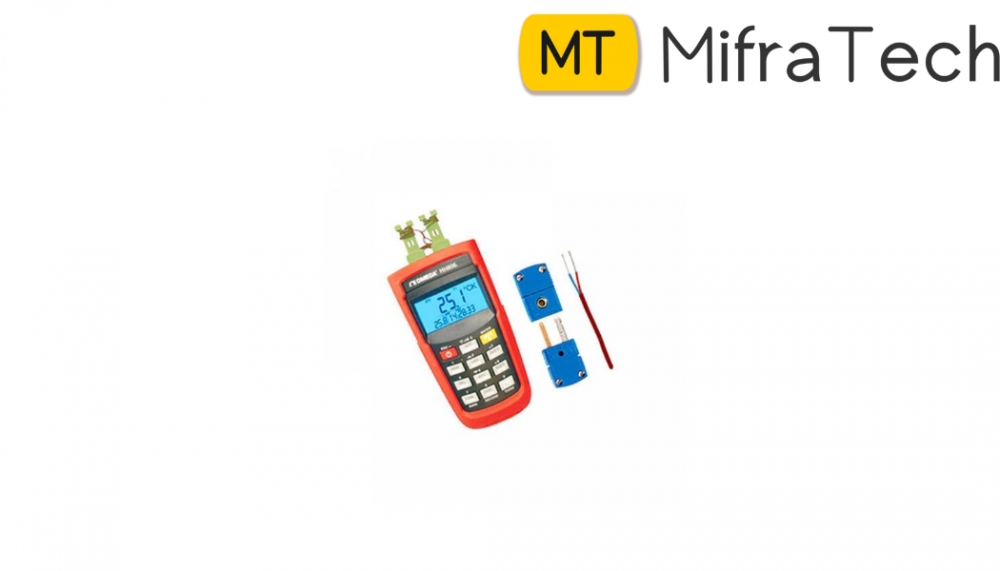
A temperature sensor is a device, typically, a thermocouple or resistance temperature detector, that provides temperature measurement in a readable form through an electrical signal.
A thermometer is the most basic form of a temperature meter that is used to measure the degree of hotness and coolness.
Temperature meters are used in the geotechnical field to monitor concrete, structures, soil, water, bridges etc. for structural changes in them due to seasonal variations.
A thermocouple (T/C) is made from two dissimilar metals that generate an electrical voltage in direct proportion with the change in temperature. An RTD (Resistance Temperature Detector) is a variable resistor that changes its electrical resistance in direct proportion with the change in the temperature in a precise, repeatable and nearly linear manner.
The basic principle of working of the temperature sensors is the voltage across the diode terminals. If the voltage increases, the temperature also rises, followed by a voltage drop between the transistor terminals of base and emitter in a diode.
Besides this, Encardio-Rite has a vibrating wire temperature sensor that works on the principle of stress change due to temperature change.
The vibrating wire temperature meter is designed on the principle that dissimilar metals have a different linear coefficient of expansion with temperature variation.
It primarily consists of a magnetic, high tensile strength stretched wire, the two ends of which are fixed to any dissimilar metal in a manner that any change in temperature directly affects the tension in the wire and, thus, its natural frequency of vibration.
The dissimilar metal, in the case of the Encardio-Rite temperature meter, is aluminium (Aluminum has a larger coefficient of thermal expansion than steel.) As the temperature signal is converted into frequency, the same read-out unit which is used for other vibrating wire sensors can also be used for monitoring temperature also.
The change in temperature is sensed by the specially built Encardio-rite vibrating wire sensor and is converted to an electrical signal which is transmitted as a frequency to the read-out unit.
The frequency, which is proportional to the temperature and in turn to the tension ‘σ’ in the wire, can be determined as follows:
f = 1/2 [σg/ρ] / 2l Hz
Where:
σ = tension of the wire
g = acceleration due to gravity
ρ = density of the wire
l = length of wire
The temperature sensor’s applications include:
Thermistors can be very small in size. They consist of a sensing element which can be either glass or epoxy coated and have 2 wires so they can be connected to an electric circuit. They measure temperature by measuring the change in resistance of the electric current. Thermistors are available as either NTC or PTC and are often low cost.
RTDs or Resistance Temperature Detectors work in a similar way to Thermistors and measure ohmic resistance to measure temperature. They are connected to a circuit in a similar way to a thermistor but they have a much wider temperature range and can measure extreme temperatures.
Thermocouples use two conductors, made up of different metals that are joined at the end to form a junction. When this junction is subjected to heat, a voltage is produced that is directly proportional to the temperature input. They are highly versatile as different metal combinations allow for different measurement ranges; however, they lack the fine accuracy of NTC’s and RTD’s making them the least precise out of the three types
Temperature Probes are a very common and diverse type of temperature sensor. They consist of either a thermistor, a thermocouple or RTD sensing element and can be finished with a terminal head. All three types of sensor can be manufactured into a variety of housing types – stock and bespoke. This allows for enhanced utility.
For More Details Contact +919972364704
https://www.mifratech.com/public/
https://www.facebook.com/mifratech.lab
https://www.instagram.com/mifratech/
https://twitter.com/mifratech